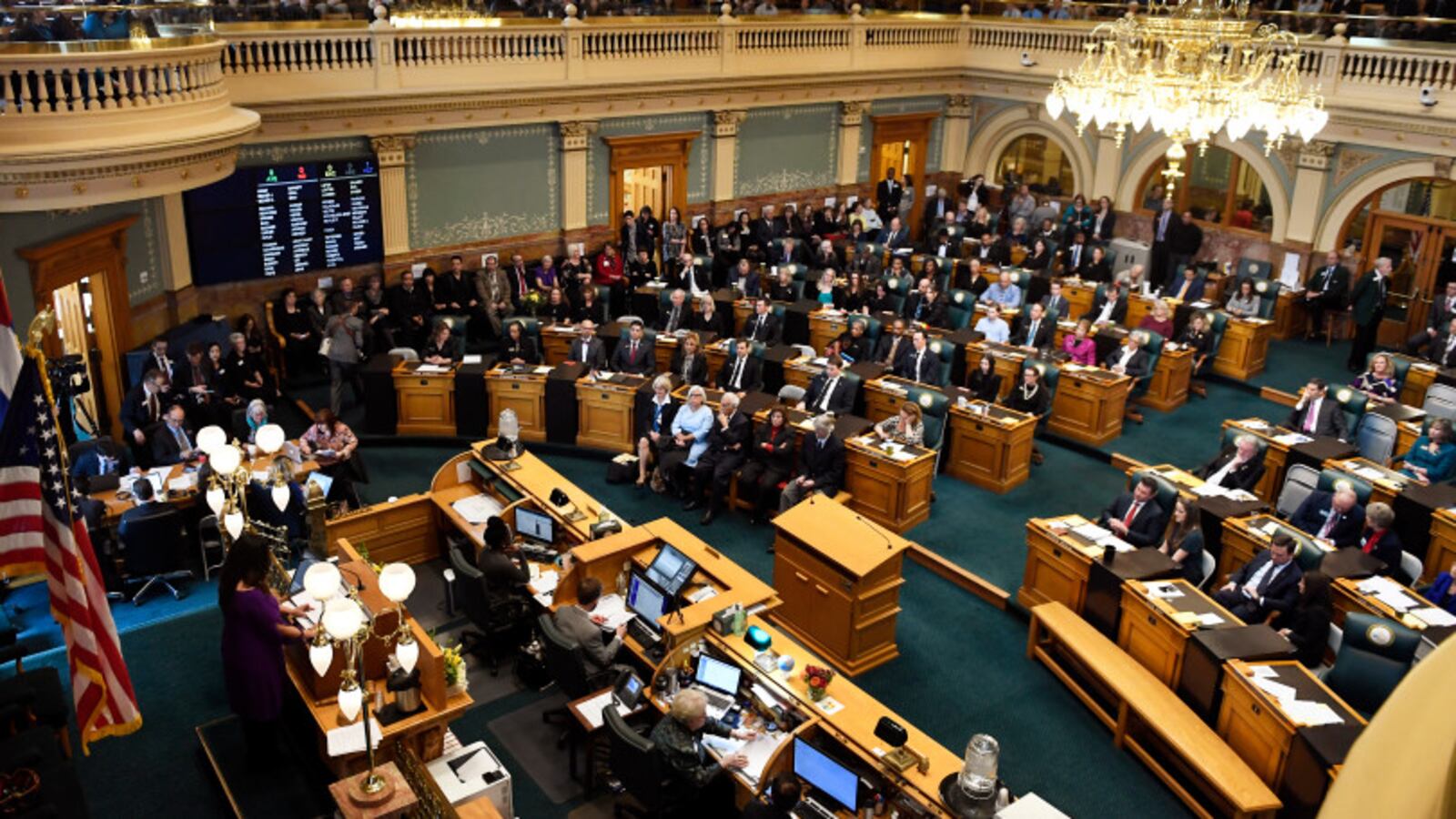Update to the update: The Senate voted on this bill on Wednesday, Feb. 21, and Republicans returned it to something close to its original form. Per-pupil funding was held steady, and total program funding went down by $7 million compared to what was appropriated last year.
Update: When the bill that enacts this money maneuver came to the floor of the House Wednesday, Feb. 7, lawmakers amended it to conform with the Democratic position. That means total program funding for education will remain the same, the state will take back $97 million instead of $104 million, and every district will get a few dollars more per pupil. Democrats also voted to put the money in the state education fund. The bill still needs to get through the Republican-controlled Senate.
Colorado is getting back $104 million that the state planned to spend on schools because local property taxes generated a lot more money than anyone anticipated and there were slightly fewer students than predicted.
Under Colorado law, the total amount of school funding remains constant once it’s set for the year, and if local school districts have more money, the state pays a correspondingly smaller amount. This year, school districts raised $97 million more from local sources, mostly property tax revenue, than predicted.
Republicans on the Joint Budget Committee wanted to put that windfall in the general fund, where it would be available for a range of needs in next year’s budget, including transportation. Democrats wanted to put that money in the state education fund. Because the Joint Budget Committee is evenly divided and the two sides couldn’t agree, under state law the money goes to the state public school fund by default. As the name indicates, that’s also money for education.
The disagreement is tied to the big political battle of this legislative session. The state has more money than it’s had in a while, and Republicans say it’s time for Colorado to make a big investment in its roads. Democrats want to spread the money around to education, housing, and other needs.
Chief legislative analyst Craig Harper told the committee that the location of the money in any particular state fund won’t make a big difference in his recommendations for education spending in the 2018-19 fiscal year.
State Rep. Millie Hamner, a Dillon Democrat, said keeping the money in education represents an important symbolic commitment.
“The mid-year adjustment resulted in a windfall to the state,” she said. By keeping the money in an education fund, “we would be sending the message that we have a lot of work to do in funding our public schools.”
The 2017-18 budget had called for $4.2 billion from the state and $2.4 billion from local school districts to go toward K-12 education, for a total program $6.6 billion. The budget stabilization factor – the amount by which Colorado underfunds its schools when compared to the requirements of Amendment 23 – was $828 million. Budget analysts and officials with the state Department of Education had recommended keeping the total program amount the same, which would have brought the budget stabilization factor down to $815 million and left schools with a little bit more money per pupil than they had before.
However, Republicans wanted to hold per-pupil funding steady at an average of $7,662.18, and their view prevailed. Because the number of students is also smaller, total spending on education when state and local share are combined will now be $7 million less.
To keep that in perspective, that’s one-tenth of 1 percent of the total spending on K-12 education in Colorado.

